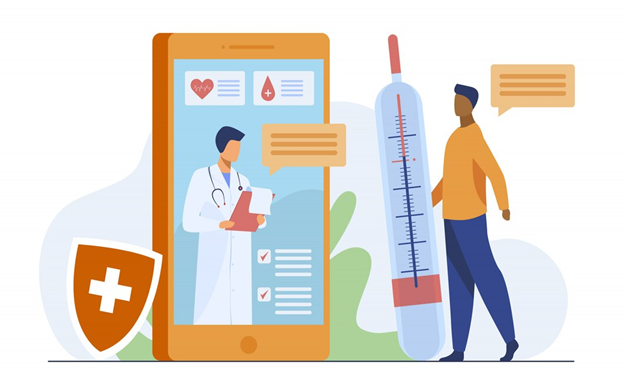What Is New in Healthcare App Testing That Works Best in 2024

Healthcare App Testing is critical to ensuring their effectiveness and safety. In 2024, this process has undergone significant advancements, driven by the introduction of cutting-edge technologies and approaches. Details of the latest innovations include automation, continuous monitoring, and advanced methodologies, which have greatly enhanced the quality and speed of testing. These innovations ensure strict compliance with user requirements and the changing vision of future healthcare technologies.
Enhanced Focus on Data Security and Privacy
Security and privacy are always the main priorities in the use of mobile applications, especially when they relate to a more important sphere of human activity. Therefore 2024, advanced application security testing technologies, such as multi-factor authentication and encryption, will be taken to the next level. These technologies meet all relevant standards and ensure reliable protection and complete confidentiality of patient data. More details can be found on the page of a hands-on and experienced testing company.
Integration of AI and Machine Learning
Modern technologies significantly speed up and improve the testing of medical programs. In 2024, they will not only automate routine tasks, detect patterns and predict potential problems but also enable rapid analysis of large volumes of data. This will significantly reduce manual testing time, improve process efficiency and provide more reliable results for patient safety.
Comprehensive Performance Testing for Telemedicine
Performance testing is becoming increasingly critical. In 2024, special attention will be paid to verifying how applications cope with a large amount of traffic, provide instant access to data, and operate stable during video consultations. Load testing, stress testing, and real-time monitoring will ensure the smooth operation of telemedicine applications, regardless of network load or the number of users. These techniques help ensure applications withstand any test and perform efficiently even under high loads.
Emphasis on User Experience (UX) and Accessibility
User interaction (UX) and accessibility have become essential for medical app development in 2024. As programs are designed for a diverse audience that includes patients with varying technical training and limitations, ensuring ease of use and accessibility becomes a priority. As test cases for the healthcare domain show testing now includes detailed usability, accessibility, and inclusiveness checks. Tools such as screen readers, voice commands, and responsive interfaces are tested to ensure seamless access for all users, including people with disabilities.
Compliance with Regulatory Standards
In 2024, regulatory compliance will become essential to medical application testing. The regulatory framework for these programs is constantly being updated, requiring test teams to stay abreast of the latest changes. Modern automated tools are used for this, which help ensure application compliance with new security and data protection standards. Such testing ensures that medical programs remain effective and fully compliant with all relevant requirements throughout their life cycle.
Shift to Cloud-Based Testing
In 2024, cloud-based testing has become an essential tool for medical application developers, providing high flexibility, scalability and cost-effectiveness. Cloud platforms simplify application integration and deployment (CI/CD), accelerate testing, and bring products to market. They also ensure cross-platform compatibility and stable application operation on different devices and operating systems. In addition, cloud environments can simulate real-world conditions, such as other network speeds and device specifications, allowing for more accurate and practical test results.

Real-World Scenario Testing
In 2024, collaboration between developers and testers has reached new heights thanks to DevOps and Agile methodologies. This approach transforms the development process by ensuring continuous testing at all stages, not just at the end. Team integration enables faster problem detection and resolution, significantly improving the quality of applications. Automated continuous testing has become a key element in the development of medical programs, ensuring their reliability and rapid market entry, taking into account modern requirements.
Automation of Testing Processes
In 2024, test automation for medical applications has reached new heights, demonstrating impressive accuracy. Today’s tools can handle complex scenarios, including the latest technologies that were previously difficult to integrate. Regression, load and safety testing have become the standard, significantly reducing time and resource consumption. This allows developers to update and improve medical programs more often, ensuring their relevance and high quality.
Importance of Interoperability Testing
In 2024, the automation of medical application testing reached a new level, demonstrating incredible efficiency and improvement. Today’s tools can now handle the most complex scenarios that were previously difficult to automate. This advancement covers regression, load, and security testing, significantly reducing testing time and cost.
Continuous Monitoring and Post-Release Testing
In 2024, medical application testing will be a continuous process that will continue after release. Constant monitoring and updates are critical to maintain high quality and safety. In conditions of rapid changes in the field of health care, programs must remain relevant and reliable. Continuous monitoring tools monitor performance, security, and user behaviour, allowing timely detection and correction of problems. Post-release testing also includes collecting user feedback to tailor applications and improve their needs.
Conclusion
In 2024, healthcare app testing has reached new heights thanks to innovative approaches. Automation, cloud platforms, DevOps, and Agile methodologies have given developers powerful tools to build high-quality, secure solutions. Continuous monitoring, adaptive testing, and a focus on compatibility ensure that applications meet user requirements and remain effective. These innovations improve testing accuracy and enhance the overall quality of healthcare services.









